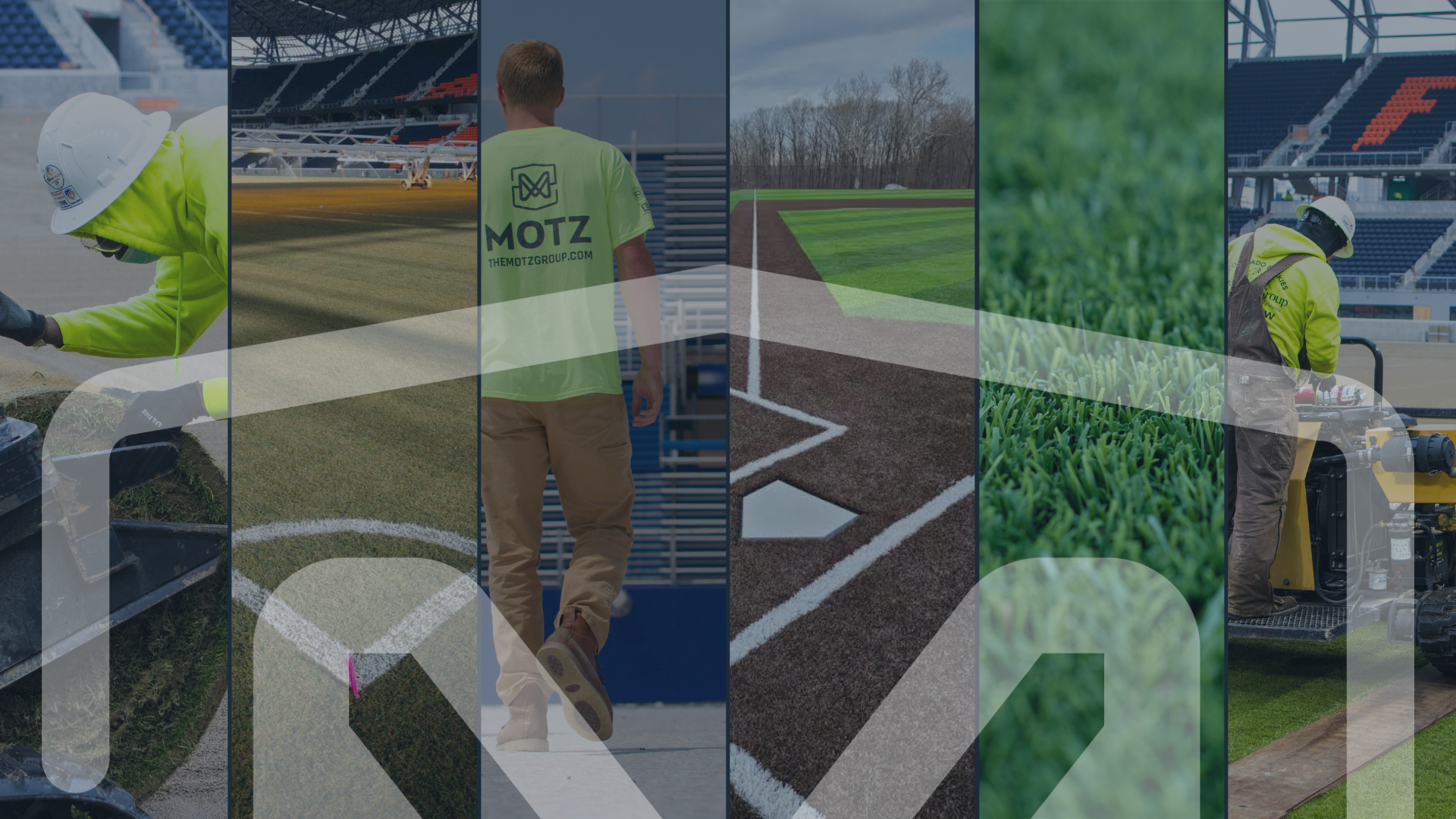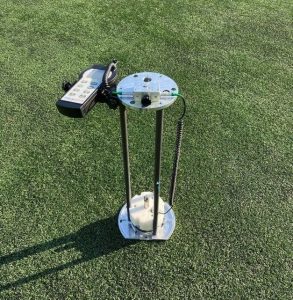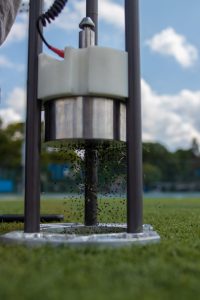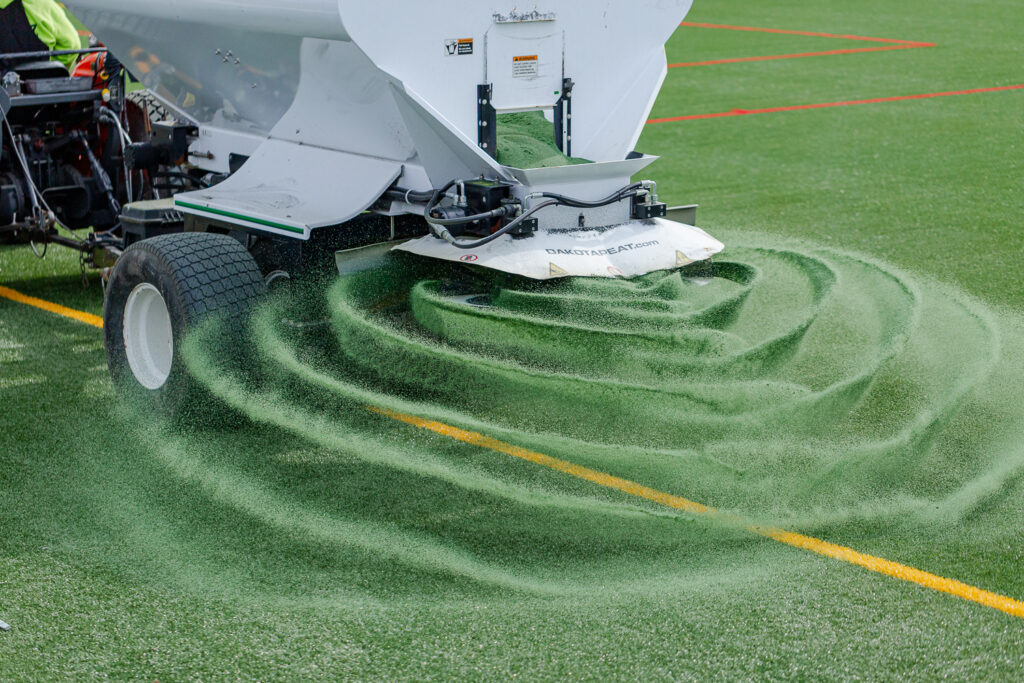
Sports Field Blog
Subscribe To Email Updates
Subscribe to our weekly newsletter and we’ll send updates straight to your inbox
What Is a GMAX Test and Why Is It Important to You

A GMAX test for sports fields is important for the improvement of playability and protection of your athletes. Monitoring your synthetic turf field throughout its life is key to ensuring that it is performing the way it should. To fully understand its importance, the benefits, and how to get started with a GMAX test, we’ve answered some of the most common GMAX test-related questions.
The Most Common Synthetic Turf Field GMAX Testing And Sports Field Safety Questions
What is a GMAX test?
A GMAX test, for synthetic turf fields, measures impact attenuation – the ability of the playing surface to absorb the “shock”, or kinetic energy – from a collision, such as a player falling to the surface of a synthetic turf sports field. The lower the GMAX rating, the more energy is absorbed by the surface of a synthetic turf field. Alternatively, the higher the GMAX rating, the less energy is absorbed by the surface, meaning more energy is returned to the player.
To ensure your synthetic turf field is operating at its best, conducting a GMAX test for your sports field is one component of field monitoring. GMAX testing must be done by a turf professional as suggested by the Synthetic Turf Council guidelines. A turf professional will be able to identify the GMAX rating of your synthetic turf sports field, give you guidance on ways to improve your turf performance, and provide maintenance care for your synthetic turf field.
What are the top 4 reasons to get GMAX testing?
- Indicates safety levels & protects athletes
- Drives maintenance recommendations
- Yields insights for replacement planning
- Assures your field stays within industry guidelines
When should you get GMAX testing for your turf field?
The best time to get GMAX testing is before the fall season starts in order to help you prepare for winter conditions. Conducting a performance test of your turf before the fall season will help you create a plan if any maintenance needs are discovered.
How does Synthetic Turf GMAX Testing work?

This test involves dropping a 20-lb, flat-ended missile, which represents an athlete’s impact with the surface. There are 10 typical locations on a field that are tested, many of which we refer to as “high-traffic areas.” These include midfield, goal lines, batter’s boxes, etc. The score at each location is documented, and then all location scores are pulled into an average for the entire field. GMAX scores should not exceed a score of 200 G’s according to ASTM, or a score of 165 G’s according to the Synthetic Turf Council.
Having this test performed will provide you insight into your field’s playability and impact attenuation, and should results indicate action is required, a plan to address the matter can be put in place. If you have a synthetic turf field, the Synthetic Turf Council recommends that you schedule a GMAX test annually to monitor your field’s rating. Conducting a GMAX test will take around 60 minutes to complete and should be conducted in fair weather.
Motz’s Approach to GMAX Turf Testing
A GMAX test is included with every Motz365 Field Aide deep clean visit. Motz provides a full conditioning game plan to protect your players from injury by keeping your synthetic turf sports field surface performing at an acceptable industry standard. If you are interested in learning more about GMAX testing, our advanced performance testing package, or have questions, contact a Motz365 field technician today!
How to get a complimentary GMAX test for your synthetic turf fields?
Motz365 Field Aide is Motz’s full-service turf field maintenance program, which includes GMAX testing and a full field condition game plan to keep the longevity and safety of your turf field. The right field testing tools and guidance from a turf professional will help provide you with additional resources to get the best condition out of your playing field and protect your athletes from injury.
Sign up for Motz365 Field Aide field maintenance and full-service program to receive a complimentary GMAX test for your synthetic turf field by a turf professional. Just looking for GMAX testing for your sports field? One of our Motz turf professionals can GMAX test your turf field. Contact a Motz365 representative for more information or to schedule a GMAX test.
What can you expect from Motz365 full-service GMAX test and field conditioning game plan?
When you secure a full-service visit with Motz365 turf field maintenance and condition game plan you can expect:
- In-depth field audit of your field conditions
- Deep-clean vacuum to collect dirt, dust, and debris
- Tine attachment sweep to fluff up your fibers and reposition infill
- Application of a contact disinfectant spray to assist with hygiene issues
- Risk assessment and insights to maximize the safety of your field
- Repair work performed
- Complimentary GMAX test with your custom results provided
- A customized report outlining services performed and recommended corrective actions
Similar Blogs



